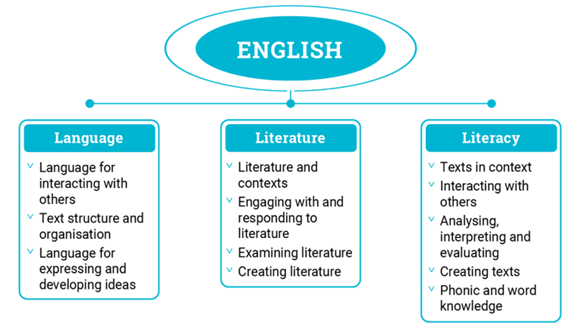English is the national language of Australia and, as such, is central to the lives, learning and development of all young Australians. Through the study of English, individuals learn to analyse, understand, communicate and build relationships with others and the world around them. It helps create confident communicators, imaginative and critical thinkers, and informed citizens.
Aims
The English curriculum aims to ensure that students:
- learn to purposefully and proficiently read, view, listen to, speak, write, create and reflect on increasingly complex texts across a growing range of contexts
- understand how Standard Australian English works in its spoken and written forms, and in combination with non-linguistic forms of communication, to create meaning
- develop interest and skills in examining the aesthetic aspects of texts and develop an informed appreciation of literature
- appreciate, enjoy, analyse, evaluate, adapt and use the richness and power of the English language in all its variations to evoke feelings, form ideas and facilitate interaction with others.
Structure
English is built around three interrelated strands of Language, Literature and Literacy with a focus on developing students' knowledge, understanding and skills in speaking and listening, reading and viewing and writing and creating. The strand and sub-strands of English are illustrated in the figure below:

Through the English curriculum students develop skills in understanding increasingly complex texts and communicating knowledge and understanding, which are essential to all learning areas.
The Minimum Requirements for Providing the Australian Curriculum will provide clarity around the time that teachers are required to spend implementing the English Learning Area.